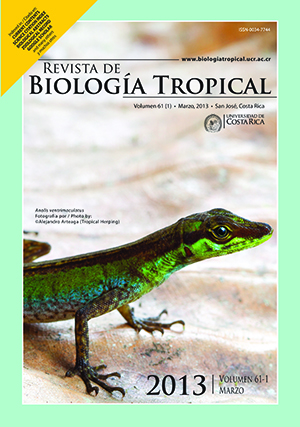Abstract
Nutritional value of seafood for human consumption is worldwide recognized. Some information have been generated in other countries, nevertheless, there is limited information describing the chemical composition of some fishery important species caught in the Gulf of Nicoya. For this reason, we studied the levels of proximal components of the edible parts (fresh) of three commercially important species. The meat samples of snook Centropomus unionesis, the shrimp Trachypenaeus byrdi and the bivalve Polymesoda radiata, were collected from the Puntarenas local fish market during the fishing season of February 2009 to January 2010. Proximate composition analysis was determined according to AOAC methodology, and evaluated the moisture content, and protein and lipid composition of shellfish meats. The results indicated that the moisture content ranged from 74.6-80.6g/100g for snook 76.9-80.0g/100g for shrimp and 77.9-89.5g/100g for green mussel. After the moisture, the protein was the most abundant chemical fraction (6.8 to 21g/100g) showing the highest values in February for the shrimp and green mussel, and December for snook. The largest fluctuations in the lipid content were found in the snook, ranging from 0.7g/100g to 5.6g/100g; the highest values in this fraction were found in shrimp, green mussel and snook, for July, February and April samples respectively. Considering these results, we concluded that fish and shrimp species studied are a good alternative for human consumption as a source of protein and low lipid content.##plugins.facebook.comentarios##
Downloads
Download data is not yet available.






